9334 A RARE PAIR OF MAHOGANY GEORGE III DRAWING TABLES IN THE FRENCH TASTE English. Circa 1790. Measurements: Height: 30″ (76cm); Width: 46″ (116.5cm); Depth: 18 1/2″ (47cm)
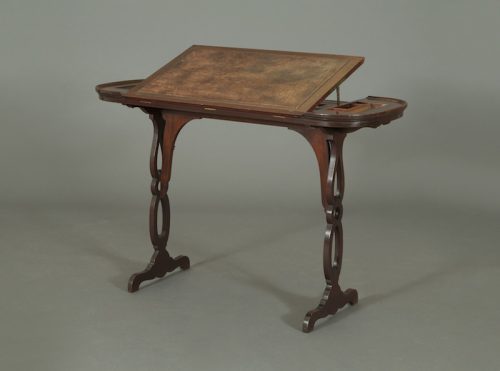
Research
Of fiddleback mahogany. Each with a central ratcheted leather inset surface flanked to either end with dished molded edges, pen and inkwell recesses, raised on pierced trestle supports, united by arched stretchers. One with restored supports.
The highly distinctive design of the tables draws inspiration from both French and Russian prototypes, most notably on a liseuse, or reading desk (figure 1) by the celebrated French furniture-maker Joseph Canabas (1712-1797).1 They are probably unique within English furniture in drawing on these distinguished precedents.
The distinctive trestle ends supporting the present tables are of a type found in French furniture of this period, narrow and pierced and raised on downward curving legs. Such trestles can, for instance, be found in an elegant Louis XVI travailleuse with a marble top and drawer set in the frieze beneath in the Ramsay Collection.2 However, in the desk designed by Canabas these trestle supports are strikingly close to those of the present tables, with elegantly lyre-shaped sections springing from a central pierced circle. As in the current pieces, curving brackets support a top with a raised rim, curved ends and a central tilting desk section flanked by shallow receptacles for holding pens or brushes.
Similar double-lyre pierced trestles also appear on a Kidney Table dating from 1780-90 (figure 2) from the workshop of Matvei Iakovlevich Veretennikov in St. Petersburg, supplier of furniture to the Imperial Courts of both Catherine the Great and Paul I.3 A further Russian example in Karelian birch inlaid with marquetry designs was sold at Sotheby’s (30.11.79, lot 315).
The design of the Canabas desk is sufficiently close to the present pieces to suggest that the maker or original owner of the present tables was aware of the form of the liseuse desk and chose to adapt it to his own requirements. The English designer has also imparted a further sense of refinement to an already elegant form by eschewing the use of a horizontal stretcher, a conceit found on the finest standard end sofa tables of the period. Such an exchange of ideas did occur in the later eighteenth century with English interest in French styles and designs continuing throughout the period and persisting despite the Napoleonic wars.
Paris exercised an irresistible appeal both to designers and to the fashionable of English society who made regular visits to the French capital and were intimates of the French court and aristocracy. English patrons and connoisseurs, perhaps most famously the Prince of Wales, later George IV, cultivated an interest in French furniture, importing from Parisian makers through marchand-mercier like the celebrated Dominique Daguerre, who had a London showroom by late 1780s. The English designer Henry Holland, who visited Paris in 1787, had close connection to French fashions and employed a group of Anglo-French craftsmen such as Francis Hervé and Sefferin Nelson.4
In return English style exercised a considerable hold on the French imagination, with so-called ‘Anglomanie’ a prominent aspect of French life in the reigns of Louis XV and Louis XVI. Marigny, a great arbiter of French taste, bought English mahogany games tables in London for the prominent ébéniste Garnier to copy in 1778 and purchased chairs and tables from James Wyatt.5
Joseph Canabas was himself recognised as working in the fashionable styles of the day, Le Style Anglais and Le Gout Grec, supplying exclusive marchands like Bennemain le June and the Presel brothers from a large workshop in the rue du Fauborg Saint-Antoine.6 His work would have been familiar to an astute English designer following the most interesting developments of continental fashion, and, in the houses of the French aristocracy, it would have been accessible to an English patron-connoisseur visiting Paris. It seems certain that the present pair of desks was intended for the residence of just such a member of the English aristocracy: interested in the pastimes of fashionable society, perhaps personally familiar with the form from his continental travels and certainly possessed of a subtle and unusually sophisticated taste in furniture design.
The tables are testimony to the importance that was attached in eighteenth-century society to the fashionable pursuit of drawing and sketching. The practising of such a skill by members of the aristocracy was a means of acquiring and displaying personal accomplishment. The arts, like literature, were seen as a way of cultivating the finer sensibilities of the imagination, an important part of the tasteful refinement that was seen as the essence of eighteenth century aristocratic life.7
A host of artists were engaged in instructing their wealthy and fashionable charges in the art of sketching, drawing and later of watercolour painting. Paintings of the period sometimes show members of the aristocracy, particularly the young women, drawing with a pen or brush in their hand, while a sketch of circa 1760 by Paul Sandby depicts one such young lady sat at a drawing board, its raised surface tilted towards her and a shelf for pots of colour to one side.8 However, the present tables, exceptional in being a pair, are distinguished from such drawing-boards by the extremely high quality of their manufacture and the sophistication of their design.
The defining aspects that imply the pair of tables’ English origin are the use of fiddleback mahogany, a type much favored in England in the middle to second half of the eighteenth century, and the concave pen trays, which are very much of the English type. Furthermore, the brass ratcheting system may be confidently classed as English.
Finally, the tables have an overall lightness of design above and beyond that found on Russian and French prototypes, which is a keynote for high-quality items produced in England at this time.
Footnotes:
1. Pierre Kjellberg, Le Mobilier Français du XVIIIe Siècle, Paris, 1989, p. 147, a.
2. Janneau Devinoy, Le Meuble Leger en France, Paris, 1952, p237.
3. G.N. Komelova, Catherine the Great: Treasures of Imperial Russia from the State Hermitage Museum, Leningrad, London, 1990, p98, figure 37.
4. Francis Collard, Regency Furniture, Woodbridge, 2000 ed., p.31-33.
5. John Morley, Furniture: The Western Tradition, London, 1999, p. 190.
6. P. Kjellberg, Le Mobilier Français du XVIIIe Siècle, Paris, 1989, p. 144-6.
7. John Brewer, The Pleasures of the Imagination: English Culture in the Eighteenth Century, 1997, p. 107.
8. John Brewer, ibid., p. 105, 44. For an example of a painting showing a aristocratic lady painting see David Allen’s Children of Henry Dundas, 1st Viscount Melville, of 1783, illustrated: Brewer, p. 108
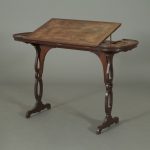
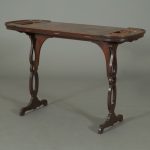
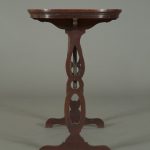
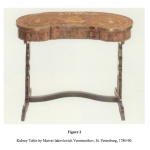
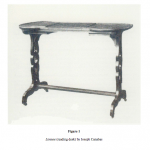
Comments are closed.